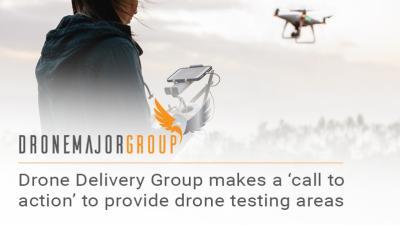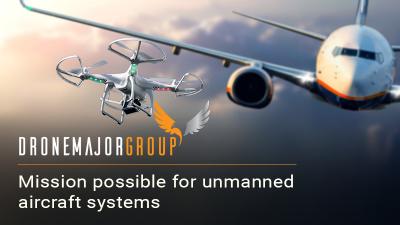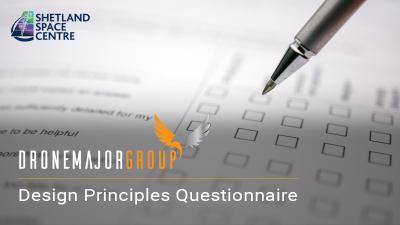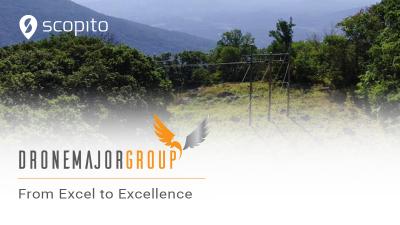News Categories
Emerging Technologies
How Drones, Robotics and Autonomous Systems Are Being Utilised in the Construction Sector.Technology develops at such a pace that the extent of emerging capabilities, or more precisely - The increasing commercial viability of Drones within the construction sector, may not be fully realised where it is needed.This article details innovative approaches to ‘Robotics, and Autonomous Systems’ (RAS), aiming to encourage ‘out of the box’ thinking while noting that some solutions may involve larger investment to initiate a new level of autonomy in consideration of contemporary systems. RAS has a lower barrier of entry for many manufacturers in areas where regulations, development, and control of operations are of vital importance, with its nearest comparison (in regard to purpose, size and relative low cost and consumerisation) being a hybrid of both aerospace and the internet of things (IoT). Read More »
Why the UK government must act now to capitalise on autonomous drone systems technology
The Drone Delivery Group (DDG) calls for improved coordination across government in order to harmonise quality and safety standards for drones operating autonomously in multiple domains. On 18 January 2023, the DDG delivered its landmark white paper ‘A National Strategy for Drones Across Land, Sea and Air’ to the Department for Transport (DfT) and the department for Business, Energy and Industrial Strategy (BEIS). Eight months in the making, the paper describes a drone strategy that can meet the demands of increasing numbers of autonomous vehicle systems. This strategy will mitigate any potential risks to the country in terms of safety and infrastructure and deliver tangible environmental benefits. Existing transport systems are served by regulations that have been developed over hundreds of years, but rapidly evolving drone technology is outpacing the demand for new regulations. As such, the DDG contends that efforts must be made to streamline the regulatory process, especially in Read More »
A NATIONAL STRATEGY FOR DRONES ACROSS LAND, SEA AND AIR
Drone Delivery Group’s new white paper outlines why the UK government must act now to capitalise on autonomous drone systems technology. The Drone Delivery Group (DDG) calls for improved coordination across government in order to harmonise quality and safety standards for drones operating autonomously in multiple domains.On 18 January 2023, the DDG delivered its landmark white paper ‘A National Strategy for Drones across Land, Sea and Air’ to the Department for Transport (DfT) and the department for Business, Energy and Industrial Strategy (BEIS). Eight months in the making, the paper describes a drone strategy that can meet the demands of increasing numbers of autonomous vehicle systems. This strategy will mitigate any potential risks to the country in terms of safety and infrastructure and deliver tangible environmental benefits. Read More »
CAP2000: Clued Up Autumn 2020: Electronic Conspicuity
The Clued-up publication is devoted to the subject of electronic conspicuity in our developing airspace infrastructure. Why do we need it, what has changed, what does it do, where can i get it and what will it cost? Who will benefit, where is it likely to be necessary, when is it likely to be mandatory and will it be required by all air vehicles and in all classes of airspace? This Clued-up publication looks at all of those aspects and tackles each in a very practical manner. It is a very informative publication packed with very current information. Read More »
The importance of post era newfound entrepreneurial spirit
While small businesses are becoming increasingly purpose-driven, it looks like businesses are also becoming increasingly digital, and embracing agile business models that allow them to quickly adapt to new environments.Throughout human history, crises have been pivotal in developing our societies.Pandemics have helped advance health-care systems, wars have fuelled technological innovations and the global financial crisis helped advance tech companies. The present coronavirus pandemic will arguably not be an exception; entrepreneurs can be expected to rise to the challenge. Read More »
Mission possible for unmanned aircraft systems
During the COVID-19 pandemic, air drones or unmanned aircraft systems have played vital roles, from delivering aid to monitoring social distancing. However, issues such as safety, security and the sharing of airspace have continued to delay their full commercial use.Unmanned aircraft systems (UAS) have undoubtedly become the technology of the moment which, from humble beginnings, is set to create an industry to rival the automotive and aviation industries combined. UAS gained notoriety as toys, but have quickly evolved into the basis for a high-value, rapid-growth industry spanning almost all sectors, including logistics, medical, surveying, security and transport, and are being used in almost every environment on the planet. UAS, which can be remotely controlled, but are increasingly being equipped with autonomous capabilities, have been around for a long time. It has only been in the past five years that the technology to make them commercially viable tools in a huge range of applic Read More »
EU UAS Implementing Regulation 2019/947 Delayed
Whilst the European Commission have delayed the EU UAS Implementing Regulation 2019/947 until 31 Dec 2020, they have not announced a delay to EU 2019/945 (unless we missed that announcement here at the DDG). This effectively means that new Drones introduced into the European market after 1 July 2021 have to abide by the EU Conformity rules in 2019/945 and must be CE marked. So if you are a UK Drone designer, how do you go about getting the relevant CE mark for your Drone? Well, unless you are in the very lowest (C0) category, you will need to have your design and productions processes, and of course your drone capability, reliability and claimed specifications assessed by a Competent Assessment Body (CAB). The CAB would assess your product against a UK Scheme. Let’s just run through that again. In order for your Drone system to be assessed the UK has to set up a UK Scheme. This UK Scheme would need to be created and owned by a UK Gov Department, most likely the DfT. Read More »
UK Drone Delivery Group releases plan to accelerate growth of UK drone industry
The UK Drone Delivery Group, the new drone industry initiative established to provide guidance on the steps required for the UK to accelerate the growth of the UK drone industry, has today released its long-awaited ‘White Paper’ for public consultation. The White Paper calls for the development of new testing grounds, which are expected to significantly transform the UK’s potential to achieve world-leading status in the fast-moving drone industry.Robert Garbett, founder of the UK Drone Delivery Group, stated: “The release of this White Paper for public consultation represents a major milestone for the UK drone industry. The mass-participation drone testing programme that the White Paper calls for will significantly transform the UK’s capability to achieve world-leadership in this industry. “The recommendations in the White Paper highlight the practical measures necessary to enable full economic development of drones, including the testing of competing solutions to ma Read More »
Public engagement on the criteria for assessing and accepting the Airspace Change Masterplan
Categories: Airspace changePublic engagement on the criteria for assessing and accepting the Airspace Change MasterplanAs part of the CAA’s Airspace Modernisation Strategy, CAA and the Department for Transport (DfT), have commissioned NERL to establish an impartial team known as the Airspace Change Organising Group (ACOG) to lead the programme to create a coordinated implementation plan for airspace changes in Southern UK. This is being referred to as the Masterplan for short. Read More »
CHIRP General Aviation FEEDBACK Edition 83
Categories: Aerodrome safety, Air display and events, Airspace alerts, Airspace change, Autogyros, Balloons, Drones, Flight training private, Gliders, Microlights, Private pilot aeroplane, Private pilot helicopterCHIRP General Aviation FEEDBACK Edition 83Flight Planning and the use of electronic devices is a major theme in this edition. Every flight needs to be planned thoroughly and the use of electronic devices can ensure NOTAMs and Controlled Airspace are avoided by an appropriate margin. Similarly, in the air electronic aids can be invaluable provided they are set up and used correctly but pilots must have some back-up means of navigating immediately available for the occasions when they fail. Read More »
Alert for Restricted Airspace - Cheltenham (Temporary)
Categories: Air displays and events, Air traffic control, Airspace alerts, Balloons, Commercial pilot helicopter, Drones, Flight training private, Gliders, Microlights, Private pilot aeroplane, Private pilot helicopterAlert for Restricted Airspace - Cheltenham (Temporary) Restriction of Flying Regulations for Cheltenham Festival 2020 from 10 to13 March 2020. Details by NOTAM and in AIC M013/2020. Restrictions also apply to the operation of all drones. SW2020/038 Read More »
UK Drone Delivery Group makes urgent ‘call to action’ for property owners and influencers to provide testing areas for drones - to prevent ‘bottleneck to growth’

UK Drone Delivery Group makes urgent ‘call to action’ for property owners and influencers to provide testing areas for drones - to prevent ‘bottleneck to growth’
One of the UK’s leading drone experts today urged British property owners and business leaders to leverage the opportunity of their under-used land for drone testing, to help accelerate the rate of growth of the UK drone industry, in the face of what he described as ‘an emerging ‘bottleneck’ to growth’.Robert Garbett founder of the UK Drone Delivery Group, which is the first industry initiative to provide guidance on the steps required to enable accelerated commercialisation of the UK Drone Industry, stated “There is a current unnecessary ‘bottleneck’ in the evolution of the drone industry and this primarily lies in the lack of controlled testing locations which can provide trial areas and safe environments to accelerate the development of drone technology, help to shape its standards, and ensure appropriate but non constricting regulations”.He commented “The British Government has played a constructive role to date and the UK is a world leader in drone technology� Read More »
Jamming trial to effect electronic situational awareness devices and UAS system 40,000 FT AMSL
Categories: Drones, Gliders, Microlights, Private pilot aeroplane, Private pilot helicopterJamming activity will take place 10 - 21 February 2020, 0800 and 1800 GMT, near RAF Spadeadam and surrounding areas.This may affect cockpit devices and UAS systems operating on 433MHz, 868MHz (FLARM/PilotAware), and 2.4GHz, 5.8GHz (WiFi) within 30 NM of 550306N 0023318W (spadeadam) up to 40,000 FT AMSL. Read More »
SN-2020/002: Small Unmanned Aircraft – Overflight of Uninvolved People
Please find below details of the CAA Publication you have selected. Dependent on availability, you are able to download the file, or purchase a printed copy.EU exit Please note that, in the event of the UK leaving the EU without a negotiated agreement, some CAA website content and application forms may continue to carry the EASA logo or reference the EU or EASA rather than the UK CAA in the short term. These will be updated in due course following the UK’s departure from the EU. In the meantime, the guidance provided and the application forms accessed via the CAA website portal will continue to be valid.Reference:SN-2020/002 Title:Small Unmanned Aircraft – Overflight of Uninvolved People Description:The purpose of this Safety Notice is to provide additional guidance to remote pilots in the form of suggested best practice when considering flight over people in accordance with articles 95(2)(d) or 95(3) of the ANO. It is also intended to remind and assist remote pilots in meetin Read More »
SN-2020/001: Small Unmanned Aircraft - Water Ingress
Please find below details of the CAA Publication you have selected. Dependent on availability, you are able to download the file, or purchase a printed copy.EU exit Please note that, in the event of the UK leaving the EU without a negotiated agreement, some CAA website content and application forms may continue to carry the EASA logo or reference the EU or EASA rather than the UK CAA in the short term. These will be updated in due course following the UK’s departure from the EU. In the meantime, the guidance provided and the application forms accessed via the CAA website portal will continue to be valid.Reference:SN-2020/001 Title:Small Unmanned Aircraft – Water Ingress Description:The purpose of this Safety Notice is to remind pilots of the requirement in law that they must be reasonably satisfied that a flight can be safely made (ANO 2016 article 94(2). Status:Current Review Comment:None Version:1 Date:16 January 2020 Read More »
Shetland Space Centre (SSC) Design Principles Questionnaire
Shetland Space Centre (SSC) is developing a vertical launch spaceport on the island of Unst, Shetland. The spaceport will launch small rockets into space from Lamba Ness on Unst in a Northerly direction over the sea. To ensure that the launching rockets are protected from other air users SSC (the change sponsor) are undertaking an Airspace Change with the Civil Aviation Authority (CAA). The change process is described in CAP 1616, which can be found at this link: https://publicapps.caa.co.uk/docs/33/CAP1616E2noninteractive.pdf One of the key principles of the change process is that it should be as transparent as possible, therefore the CAA hosts an airspace change portal where individual airspace changes can be followed. The following link will take you to the portal: https://airspacechange.caa.co.uk/OrganizationSearch Read More »
The CAA has launched a consultation on our airspace classification review
Help us identify volumes of controlled airspace in which the classification could be reviewed On 30 October 2019 the Secretary of State for Transport wrote to the UK Civil Aviation Authority (CAA) to amend the 2017 Air Navigation Directions to give us a new role regarding the way in which airspace is classified. This now means that we must: Regularly consider whether to review the classification of airspace; consult airspace users as part of that review; where we consider a change to classification might be made, amend it ourselves in accordance with a new procedure that we must develop and publish; in developing that procedure and our policy describing airspace classifications, seek to ensure that the amount of controlled airspace is the minimum required to maintain a high standard of air safety and, subject to overriding national security or defence requirements, that the needs of all airspace users are reflected on an equitable basis. Read More »
The UAS community created ‘a new transport ecosystem’ at Amsterdam Drone Week
Just like the drone industry itself, the Amsterdam Drone Week is rapidly outgrowing its infancy. Together with the High Level Conference on Drones, co-organized by the European Aviation Authority EASA, the second edition of the event made Amsterdam the epicenter of the global drone industry. In addition, important milestones were achieved in the adoption of European legislation and regulations concerning U-space.“We are at the dawn of a new social and industrial revolution”, said Philip Butterworth-Hayes at the opening of the Amsterdam Drone Week. “Humans, robots and automated systems are going to work together. We are creating a new transport ecosystem and we are learning right now here in Amsterdam how this will work. ”Filip Cornelis, Director for Aviation (DG MOVE Directorate) in the European Commission, added the important role of cities in reshaping the future of mobility: “Cities will have to manage the 3rd dimension: the skies over the cities where the bulk of drones Read More »
AUTONOMOUS DRONES FOR INDUSTRIAL SITES
The push for digitalization in the global business age exacerbate with challenges familiar to manufacturers. Increased volatility in prices and availability of raw materials, the response to rapid swings between product shortages and capacity overages, staff fluctuations, concerns about intellectual property security, and the frequent movement or closure of industrial sites - all increases competitiveness and search for efficiencies.Autonomous drones help companies respond to time, cost, and quality restrictions, while dynamically positioning them to respond to future technology- and data-driven demands.ENSURING INDUSTRIAL SECURITY Read More »
FROM EXCEL TO EXCELLENCE
The story of how one Co-op turned 3000 images in Excel into actionable insights about their assets. “Successful people don’t keep up. They stay ahead.” Read More »






















